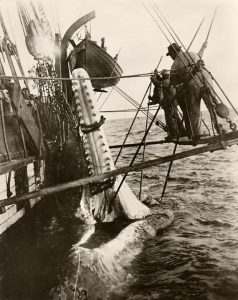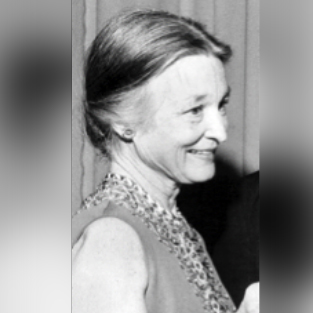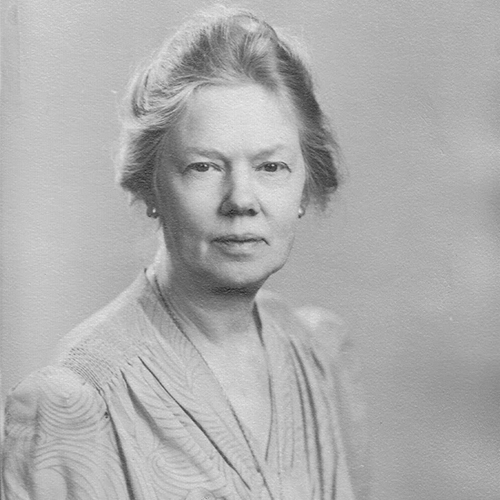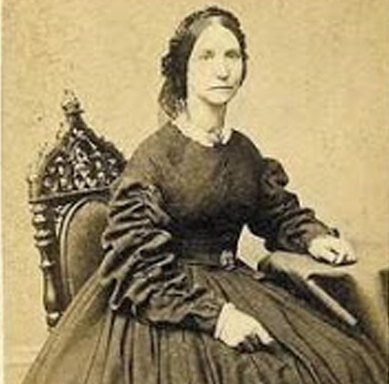Marian Shaw Smith (1866-1913) sailed the world’s oceans as a whaling captain’s wife, log keeper, photographer, navigator, correspondent, and business partner. Over the course of 18 years and 10 voyages, she wrote detailed letters to family and friends and took photographs of whale hunting and processing, some of the earliest ever taken. She was born in South Dartmouth and is buried in Padanaram Cemetery.

Citation: Smith, Marian Shaw, “[California Whaling Image],” Negative, Glass, Dry Plate, New Bedford Whaling Museum, 2000.100.259
The letters that did reach their destination and are retained by the Whaling Museum reveal a woman of remarkable courage and spunk, one willing to take on the adventures as well as the gore of hunting for whales. Born in 1866 in South Dartmouth, Massachusetts, to Dumpling Rock lighthouse keeper Charles C. Smith and his wife, Sarah Davenport Shaw Smith, Marian spent her early years on that rock, surrounded by the sea. She and her younger sister, Annie, lived there in their early childhood, until their mother died when Marian was six years old. In 1873, her father gave up the lighthouse but remained in Dartmouth, Marian moved in with an aunt and uncle in Padanaram Village, and her sister went to Fall River to live with other relatives.
Marian attended grammar school in South Dartmouth and then the Middle Street School in New Bedford. From there, she attended New Bedford High School, graduating in 1885 at the top of her class. According to newspaper accounts of the day, her valedictory essay was a comparison of home life in England, France, Germany, and Russia with that in the United States. Her interest in both home life and travel would last a lifetime.
In the fall of 1885, Marian took a teaching position some 100 miles from New Bedford at the Clarke School for the Deaf in Northampton, Massachusetts, an idyllic small city in the Connecticut River Valley and home to Smith College and progressive ideas. She taught at the Clarke School until 1893—with one significant two-year hiatus for her wedding and first whaling voyage aboard the steam bark Narwhal—and her love for travel was again apparent in the geography book she wrote and used in her classes. Her friendship with fellow Clarke teacher Elizabeth Fay continued for years and is reflected in the many letters Marian wrote to her friend Bess and the Fay family. (These letters are part of the Marian S. Smith Collection at the New Bedford Whaling Museum.)
On December 26, 1889, Marian married Horace Perry Smith. Horace, also from Dartmouth, was the son of Royal Smith, brother of Marian’s grandfather Levi Smith, thus making Marian and Horace first cousins once removed. She was 23 and he 36 when they were wed. Horace was already an experienced whaler and captain, having first gone to sea at age 15 as ship’s boy on a three-year, three-month voyage aboard the bark Triton and rising to master of the bark Seine at age 30. He had nine voyages to his name before he and Marian headed across the country by train so that he could command the Narwhal in its voyage from San Francisco to the North Pacific whaling grounds. While Horace was in the Arctic, Marian stayed in California, befriending other captain’s wives and becoming one of the “whaling sisterhood”; she would later meet up with this sisterhood at sea. Today, she is remembered for that role, among others, and her friendships with those women over the years, including Flora Clough Whiteside and Honor Matthews Earle, are recorded in Marian’s letters and photographs.
Over the next few years, Horace continued to sail out of San Francisco and winter-over in the Arctic, so Marian traveled back east and returned to the Clarke School. By 1895, however, they agreed that she would join him on subsequent voyages, and the two sailed out of San Francisco in March of that year. In her seven months aboard the Narwhal on that voyage, she wrote many letters home, 13 of which survive. In these and subsequent letters written during her 10 voyages, she presents a unique perspective in a male-dominated world, revealing details of whaling life as she slowly adjusted to her role as the captain’s wife on a whaling ship.
As more and more ships gathered in the North Pacific whaling grounds in 1895, Marian met whalers from all over the world as well as native Inuit hunters and their families. In Port Clarence, a rendezvous spot on the Bering Sea for the Arctic whaling fleet, she, Horace, and friends even celebrated Independence Day, complete with a picnic, bottles of beer, and a Fourth of July cake. Two of her acquaintances had cameras, and their photographs from this time document the faces of visitors and natives of the vast Arctic. Marian herself would soon acquire a Kodak roll-film camera and would learn to develop and print her own photographs at sea, producing some of the earliest photographs ever taken of life aboard a whaleship. Her picture book, Cutting In a Whale, presented 25 photographs taken on board the bark California in 1902 and was published by Hutchinson and Co. in 1903; some of these photographs were made into postcards and are “as fine such images as have ever been taken,” wrote Michael P. Dyer in his book O’er the Wide and Tractless Sea (New Bedford Whaling Museum, 2017). Another of her photographs is reproduced in Richard Benson’s art book, A Maritime Album: 100 Photographs and Their Stories (Mariners’ Museum/Yale University Press, 1997).
From January 1899 to July 1901, Marian joined Horace three more times and took to the sea again aboard the bark California from San Francisco to the Pacific and Japan. They then came east and made two voyages aboard the Josephine from New Bedford to the Atlantic and Indian Oceans from 1903 to 1907. She and Horace would end their careers in 1913 as owners of the schooner A. M. Nicholson, making four voyages in search of whales in the Atlantic. On her last voyage, she is listed as the official Assistant Navigator.
As she became more comfortable on the water and more experienced in whale hunting over the course of these voyages, her roles both on and off the ship expanded. On her first voyage, she learned to “take the sights” and wrote to her father in 1895: “I’ve learned some of the ropes and most of the sails, and learned to read the sextant and get the latitude. The longitude I’m not yet up with.” Over time, she became an exceptional navigator, equal to Horace and earning accolades in the Boston Globe in 1907: “Mrs Smith could, if anything should happen to her husband, navigate the Josephine to any part of the world.”
Not all her time was spent aboard ship, however. Marian’s descriptions of the harbors, villages, flora, and people of the Arctic, Japan, Cape Town, the Crozets, and numerous islands throughout the world’s oceans give us a glimpse of her interests. She purchased furs, feathers, china, jewels, and trinkets for herself and brought home similar gifts for her family and friends. In her letters, she speaks of food, fashion, books, and current events, both yearning for news from home and spreading news from abroad.
Through Marian’s letters at the New Bedford Whaling Museum—to her father, her sister, her cousin, and her good friends—we get a full view of a woman straddling the 19th and 20th centuries, straddling the roles of wife and business partner and finding her own way. At sea, she expanded the role of captain’s wife to that of photographer, navigator, correspondent, and business partner. On shore at home, she gave lectures and wrote of her travels, sharing her experiences and inspiring others. She broke many barriers: between the hearing and the deaf, between men and women aboard a whaleship, and especially between people of different cultures. She was a true ambassador, spreading news of current events and sending home news of foreign lands. In many ways, besides showing the world to New Bedford, Marian Shaw Smith also showed New Bedford to the world.
Marian’s last voyage aboard the A. M. Nicholson came to an abrupt end when she became ill and left the ship in May 1913. When it became apparent that she would not recover, a tug was sent to the Hatteras whaling region to locate her husband, Horace, and bring him back to his wife. Shortly after he and Marian were reunited, he suffered a sudden death; her death, at age 47, followed three weeks later. She is buried next to Horace in Padanaram Cemetery in South Dartmouth, about five miles from her childhood home on Dumpling Rock.
Kathleen M. Lafferty
![[Marian Shaw Smith], c. 19th century, Photograph, Courtesy of New Bedford Whaling Museum Photograph of Marian Shaw Smith - a woman with light hair pulled in a bun above her head and a black dress with collar](https://historicwomensouthcoast.org/wp-content/uploads/2018/06/Marian-Shaw-Smith-1551x1551.jpeg)




